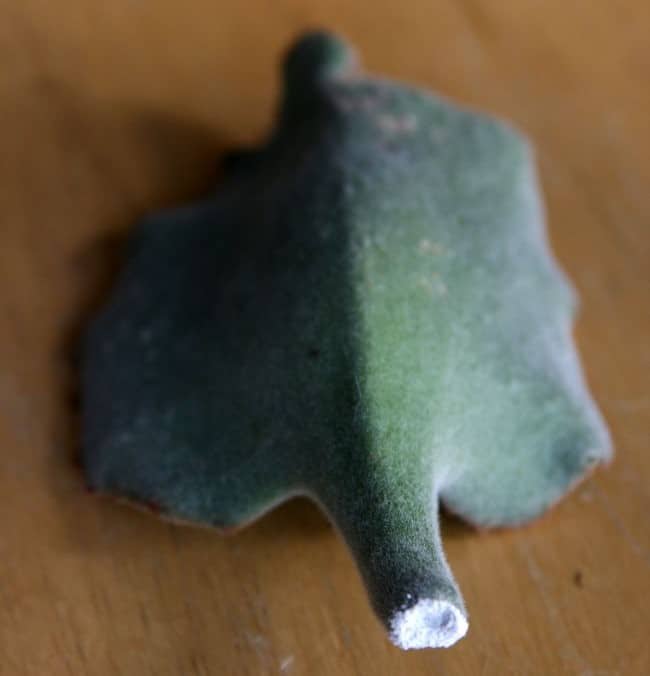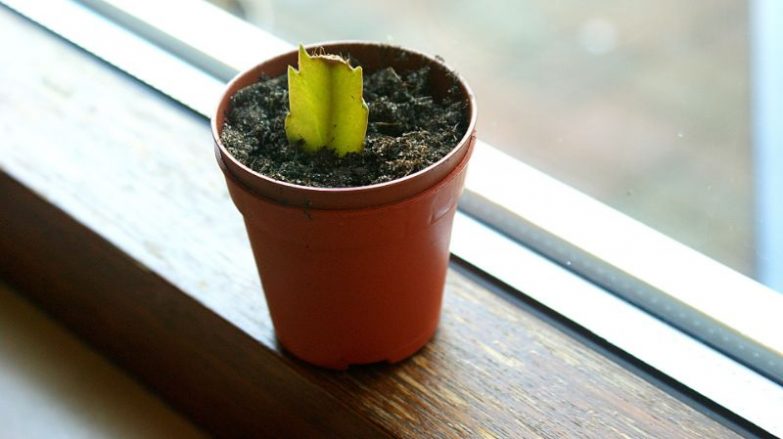If you’ve ever read instructions or watched a video on how to propagate plants, chances are you’ve heard about rooting hormone. It’s recommended when trying to “start” new plants from existing ones and serves a very useful purpose.
How does rooting hormone work? Rooting hormone is used when propagating cuttings to increase success and works in two different ways. It helps to stimulate root growth and stronger root development and also acts as an antifungal agent to protect the freshly cut stem/leaf from infection.
Rooting hormone serves an important purpose in plant science and care, but it’s important to understand what it is, how and when to use it, all of the different types available, and how to choose a good rooting hormone for your needs. This ensures you are using it correctly.
What Is Rooting Hormone?
Rooting hormones are a commercial product – although you can make your own – that is used when propagating stem or leaf cuttings to promote root growth and protect the cutting from diseases. They are a mix of hormones naturally found in plants, called auxins.
Just like humans, the processes that occur within plants are regulated by hormones. The five primary plant hormones, auxins, cytokinins, gibberellins, abscisic acid, and ethylene, work in a myriad of ways within plants.
When cells form, they are undifferentiated, meaning they are very basic and have the ability to differentiate into specialized cells depending on the concentration of hormones. When auxins are present, the trigger a cellular change that promotes roots to grow.
How Do You Use Rooting Hormone?
Rooting hormone is used when you are propagating new plants from cuttings. This results in plantlets that are identical clones to the parent plant.
The two most popular methods are stem cuttings and leaf cuttings.
Stem Cuttings
Stem cuttings are the most commonly used method for propagating new plants. They work well for herbaceous plants, especially those that grow quickly like herbs and vining-type plants (i.e. pothos, philodendron, ivy, etc.).
To take a stem cutting, remove a 10 to 15-centimeter (4 to 5-inch) section from the end of the stem and remove leaves from the bottom one-third of the stem. The new roots will generate from the nodes, the points on the stem where the leaves attach.
Leaf cuttings
Leaf cuttings are commonly used for plants such as succulents, African violets, snake plants, and peperomia. In this case, an entire leaf is removed from the plant; it can be used whole or cut into sections or strips to root and propagate a new plant.
After the cuttings are taken, both methods follow the same steps.
- Once you have your cutting, dip the freshly cut end in rooting hormone. Make sure you pour some into a small bowl instead of dipping the plant material directly into the container to avoid contamination.
- If planting in potting soil, carefully place the dipped end of the cutting in a pot containing fresh, potting soil. Bury it slightly under the surface and water the soil well.
- If rooting your cuttings in water, place the dipped end of the cutting in a glass or plastic container of tepid or room temperature water.
- Place the container of soil or water in a warm location with bright, indirect light.
When Should You Use Rooting Hormone?
Ask a handful of experienced gardeners when you should use rooting hormone, and you’re bound to get a handful of answers. Some people believe you should use it anytime you’re propagating cuttings; some believe you should use them when trying to root high-dollar plants or plants that are slow to grow roots; some people don’t think they are ever necessary.
My opinion is that rooting hormone is worth the money if you want to invest in it — using it will certainly improve the success rates of your cuttings — but it isn’t necessary to use on all plants. I’d recommend using it on ornamental landscape plants, succulents, and plants that are slow to root and skip it on plants that are quick to root themselves.

Different Types Of Rooting Hormones
If you choose to use a rooting hormone you can either purchase pre-made products or use natural options.
Pre-Made Products
Commercially available products contain the same, or similar components, but vary in their form. Each type has its pros and cons that should be weighed to decide which form is right for your needs.
Powder Rooting Hormone
Powder products have the consistency of talc or flour and are most commonly used in commercial growing operations or greenhouses/nurseries.
Pros of using powder:
- Easy to use.
- Long shelf life.
- It doesn’t need refrigeration.
Cons of using powder:
- Less efficient than liquid. The powder doesn’t stick uniformly to the cutting, and the phytohormones are taken into cells more readily when dissolved in water.
Liquid Rooting Hormone
Liquid rooting hormones are commonly used by homeowners and come in either concentrated solutions or a standard strength. Concentrated solutions must be diluted before use; standard strength solutions are ready to use right out of the bottle.
Pros of using liquid:
- Convenient.
- Less mess than powdered types.
- No need to calculate the concentration when working with ready-to-use liquid products.
- Can adjust the concentration of concentrated products to meet the needs of the plant you are rooting.
Cons of using liquid:
- Can’t adjust the strength of the ready-to-use products.
- Have to dilute concentrated products.
- Shorter shelf life than powders.
- May need to be refrigerated.
Gel Rooting Hormone
The gel formulation of rooting hormones has taken the lead as the most commonly used type by homeowners.
Pros of using gel:
- Convenient to use; doesn’t need diluting.
- Less messy than powders.
- Thick coverage means better adherence to the plant tissue.
Cons of using gel:
- More expensive than other types.
- Shorter shelf life than powders.
- May need to be refrigerated.
Natural Options
There are also many items found in your home that can be used as a rooting hormone. The science behind them isn’t as substantial as with commercial products, but there is anecdotal evidence they work.
- Honey: Boil 2 cups of water, add 1 tablespoon of honey, and let cool. Works as a natural antibacterial agent.
- Apple cider vinegar: Mix 3 teaspoons of ACV into 1 gallon of water. It contains over 30 trace elements that are beneficial to play growth.
- Saliva: Known to be a natural root enhancer, you can opt to either spit on the cuttings or lick them.
- Cinnamon: known to kill fungus and bacteria. Dip cut end of cuttings directly in cinnamon for best results.
- Aspirin: Crush one regular-strength aspirin and add the powder to 1-gallon of warm water. Soak cuttings for several hours before potting. The salicylic acid acts as an anti-inflammatory and rooting stimulant.
- Aloe vera gel: Fresh squeeze aloe vera gel from aloe plants works similarly to aspirin because it contains salicylic acid.
How To Choose A Good Rooting Hormone
There are some things to consider when choosing a good rooting hormone. These parameters will help you pick the best one for your situation.
- Form – Weigh the pros and cons of each type, deciding if you want a powder that is more shelf-stable or a liquid/gel that works better but doesn’t store as long.
- Organic or not – Do you follow all organic practices in your garden, or do you choose to incorporate conventional practices as well?
- Price – Rooting hormones are available in a wide range of prices, based upon form, if they are organic, etc. How much you can spend depends on your budget. My recommendation? Avoid the cheapest products, yet don’t spend money on high-end ones either; instead look for middle-of-the-road price tags.
- Reviews – In this day and age of internet access, use online reviews to get a feel for what products are good and what products aren’t worth spending your money on.
Common Questions About Rooting Hormone
Do You Need To Use A Rooting Hormone For Cuttings?
- No, you don’t need to use rooting hormone for cuttings. It’s not necessary to use on herbaceous plants that root quickly on their own, but it is beneficial to use when propagating plants that are slow to root, succulents, and expensive ornamental landscape plants.
How Long Does It Take For A Rooting Hormone To Work?
- The rate of action is very dependent on the underlying plant. Some plants root within 1-2 weeks, others can take several months. Rooting hormone makes the process quicker and increases the success rate; the rooting process isn’t quick, regardless of whether a rooting hormone is used or not.
Can You Use Too Much Rooting Hormone?
- Yes, you can use too much rooting hormone. It’s important to follow the directions on the package label to ensure you don’t damage the cells with over-application. Similar to over-dosing yourself with medication, a high level of rooting hormone is dangerous to cuttings as well.
Does Rooting Hormone Work In Water?
- Yes, rooting hormones will work in water. Water helps the rooting hormone to be absorbed into the plant, increasing efficiency. However, rooting cuttings in water is only appropriate for certain plants.



